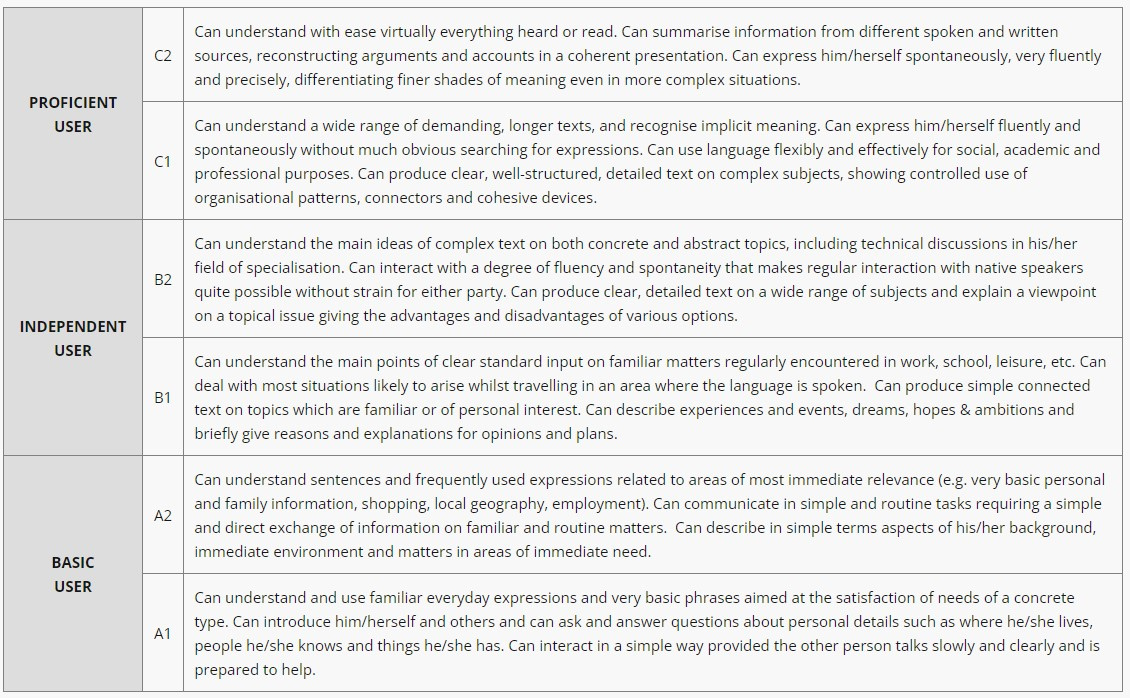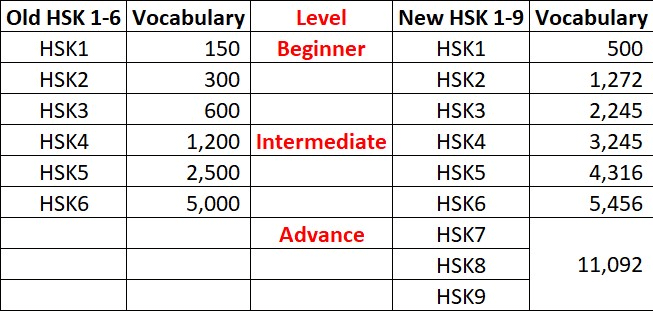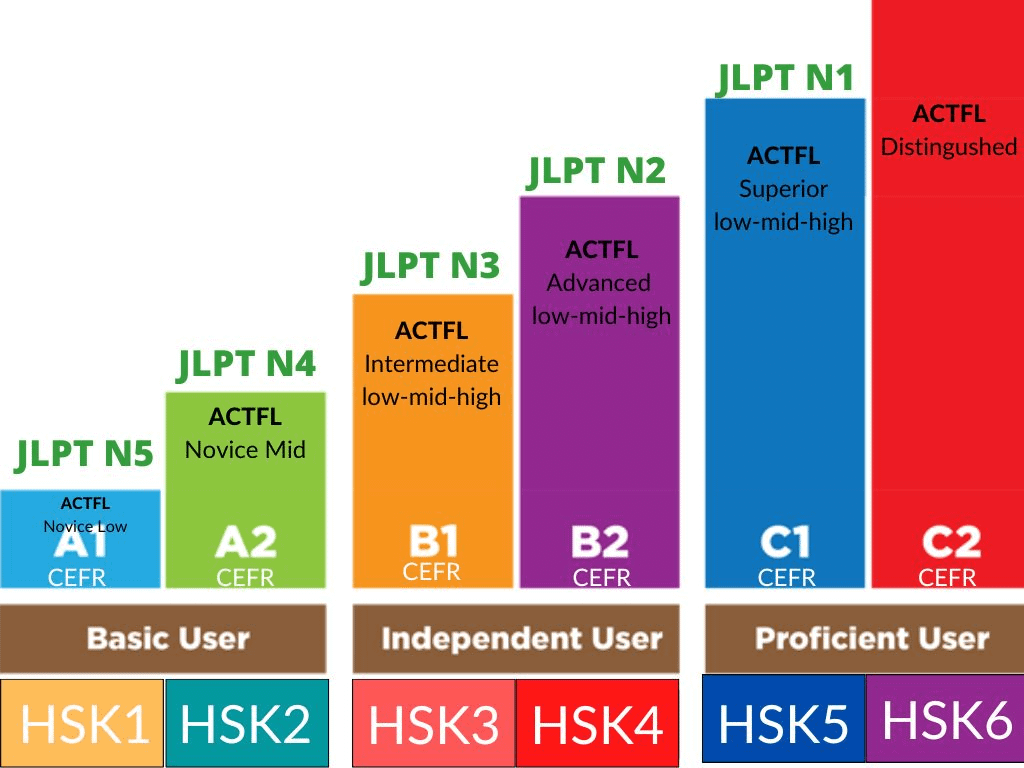Are you sick of answering “What is your language level?” when you tell people you can speak a foreign language? Do you know how to put your language level on your resume to get a job or promotion?
The most common answers I heard are: “I learnt Chinese for six months” or “I studied Japanese at high school”. If you told the interviewer above or wrote on your resume as above, do you think the employer or the recruitment agent will understand your language level?
To help you answer your language level clearly, I will introduce some international standards for language proficiency levels and compare them with the Chinese Language Proficiency Test (HSK) and Japanese Langauge Proficiency Test (JLPT).
CEFR – Common European Framework of Reference for Languages
There are many language proficiency standards in the world for different purposes. The most popular one is the “Common European Framework of Reference for Languages: Learning, Teaching, Assessment” (CEFR). It is a guideline used to describe the achievements of learners of foreign languages across Europe and, increasingly, in other countries. More and more educational institutions and employers use CEFR to evaluate the language qualifications of candidates for education admission or employment.
The table below gives a very good description of each level:

ACTFL (American Council on the Teaching of Foreign Languages) Guideline
ACTFL is an individual membership organisation with over 13,000 members in America. ACFTFL language proficiency guideline has five levels and three sublevels:
- Novice – Low, Mid and High
- Intermediate – Low, Mid and High
- Advanced – Low, Mid and High
- Superior
- Distinguish
Since ACTFL guidelines five levels are defined separately for the ability to listen, speak, read and write, a person can reach the advanced level in listening and speaking while remaining at a lower level in reading and writing. This is too complicated to compare with CEFR six levels.
CEFR is more popular than ACTFL in the world. However, more and more countries start to use their own language proficiency standard.
HSK (Chinese Language Proficiency Test)
HSK stands for Hanyu (Chinese) Shuiping (Level) Kaoshi (Test).
HSK 1.0: The 1st HSK started in 1990 in China and started overseas exams in 1991. It had three standards (Advanced, intermediate and beginner) and 11 levels. By 2003 (12 years later) there were 46 test sites in 29 countries and more than 260,000 people took the HSK test
HSK 2.0: In 2009 the 2nd HSK standard started. It reduced the levels from 11 to 6. In 2019, there are 1,229 HSK test sites in 150 countries and more than 800,000 people took the HSK test. This new HSK is now over 10 years and became the most recognised Chinese Language Proficiency Certification.
HSK 3.0: In 2020, the Chinese government published “Chinese Proficiency Grading Standards for International Chinese Language Education (GF0025-2021)” and announced that HSK will change to “three levels and nine bands”. This will be the HSK version 3.0. However, it will take 2 – 3 years for this to replace the current HSK 2.0.
Below is the comparison of the new HSK 1-9 and old HSK 1-6.

The new three levels (HSK7 – HSK9) will start this year, but the current HSK1 – HSK6 will stay the same for 2-3 years. If you want to know more about the changes, please read: What do you need to know about the HSK change? (languagetutor.com.au)
The new HSK level 7-9 are too difficult even for native speakers. You don’t need to worry about them unless you want to study for a Master’s or Doctor’s degree in the Chinese language.
An HSK3 will be good enough for you to apply Chinese university scholarship and visa application.
If you are interested in HSK, my suggestion is to join one of our HSK classes and get the certification now before it changes.
JLPT (Japanese Language Proficiency Test)
JLPT stands for Japanese Language Proficiency Test. It is an official Japanese language proficiency certification for non-native Japanese speakers.
The first JLPT test started in 1984 with about 7,000 people from over 15 countries. In 2018, there were over 1 million people took the JLPT test in 86 countries and areas worldwide. JLPT is now the largest Japanese language test in the world according to JAFA (The Japan Australia Friendship Association)
JLPT has five levels: N5 to N1 (easiest – hardest). You can find more details from the JLPT official website for each level.
Here are some benefits of JLPT certification:
- JLPT N1: Gain 15 points for Preferential Treatment for Immigration System for Highly Skilled Foreign Professionals in Japan. Get a job and into university. And all the benefits of below levels.
- JLPT N2: Gain 10 points for Preferential Treatment for Immigration System for Highly Skilled Foreign Professionals in Japan. Some companies and universities accept JLPT N2 but N1 will be preferred. You also get an exemption from the skills exam for high school education. And all the benefits of below levels
- JLPT N3: Find a part-time job and an intern position.
- JLPT N4: If you want to enter Japan under Technical Intern Trainee or specified skills visa, JLPT N4 is a must, JLPT N3 and above will be better.
- JLPT N5: Showing you can survive in Japan with basic Japanese skills.
We have helped many students pass JLPT N5, N4 and N3. Read more about How to pass JLPT N5? (languagetutor.com.au) and join our Japanese class on Sunday or online.
The comparison:
To help you understand the different levels of the above four standards, I summarised the table below.

There is no official recognition of these different standards. This is based on my research and for your reference only.
What standard does Australia use?
Based on my brief research, there is no official standard for foreign languages in Australia.
In 1996, Ingram D.E presented “The ASLPR: Its Origins and Current Developments” at the NLLIA Language Expo ’96 in Brisbane. However, it seems this standard was not used widely.
Another result is “AUSTRALIAN FOREIGN SERVICE LANGUAGE PROFICIENCY RATINGS“. This standard is developed by Diplomatic Academy for DFAT (Department of Foreign Affairs and Trade). It has nine levels for speaking and reading (translation) and four levels for information interpreting. Obviously, this standard is not for normal people.
So what standard does Australia use for foreign languages?
HSK is used for the Chinese language and JLPT is used for the Japanese language. In Queensland, you can get two QCE credits if you pass HSK6 (which used to be HSK2) and they used to give two QCE credits if you pass JLPT N5 as well, but this was cancelled from 2022.
There are more and more organisations in Australia that recognise HSK and JLPT.
Based on a study conducted at Australian universities, “89% of the Year III students, namely the BA graduates in Chinese language major at the Australian university where data were collected, passed HSK level 4 when they completed all the Chinese courses for their study. It is reasonable for this study to propose that HSK Level 4 be established as Chinese BA language proficiency threshold in tertiary CFL programs in Australia.” (Source: https://www.scirp.org/journal/paperinformation.aspx?paperid=100018)
According to an article published in 2019, there are only about 130 non-Chinese Australians who can speak Mandarin fluently at HSK5 or HSK6 level Fact Check: how many proficient Mandarin speakers does Australia have? (crikey.com.au).
Next time when you are asked, “What is your language level?” You can tell them you have HSK level 3 or JLPT N3. This will be very impressive.
Thinking about getting HSK 3 or JLPT N3? Start today and it is not that hard.